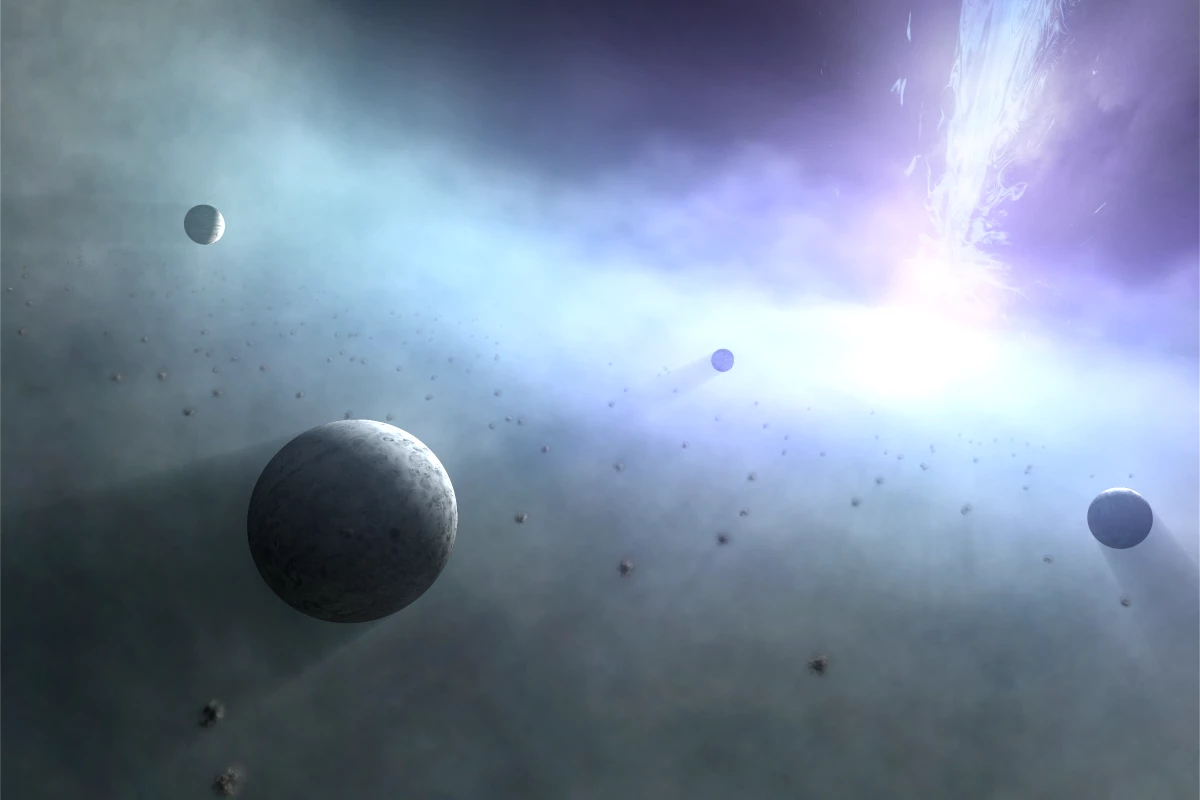Besides a few rogue agents roaming the cosmos on their own, every planet we know of orbits a star – but that might not be a universal rule. According to new calculations by researchers at the National Astronomical Observatory of Japan (NAOJ), planets could technically form around supermassive black holes, creating vast planetary systems containing thousands of worlds.
Planets tend to form out of protoplanetary disks – rings of dust and gas that circle stars. In these disks, grains of dust slowly stick together, creating bigger and bigger clumps, growing their mass and gravity which in turn attracts more loose matter, making them even bigger. Eventually, what you end up with is a system of planets of various sizes, smaller moons that get stuck orbiting those planets, and leftover crumbs drifting around in the form of asteroids and comets.
But stars aren’t the only objects out there with dusty disks. Supermassive black holes, the enormous objects at the centers of galaxies, can have much bigger disks. In some cases the dust there can amount to the mass of 100,000 Suns, which is roughly a billion times more than you’d find in a standard protoplanetary disk.
So, for the new study the NAOJ astronomers applied the regular models of planet formation to these gigantic disks, to figure out if they could form around black holes too. And sure enough, given the right conditions they should be able to.
The team investigated black holes located right in the centers of particularly active galaxies, areas known as active galactic nuclei (AGN). Because the dust disk can be very dense, there will be extremely cold regions that are protected from the intense radiation at the heart. In these areas, dust grains form icy mantles that make them stick together easier, kicking off the planetary formation process.
Give them a few hundred million years – not all that long, in the grand scheme of things – and you could have planets orbiting black holes. And not just a few either. Since’s there’s so much more dust there, these planetary systems could far outnumber our solar system’s paltry eight planets.
“Our calculations show that tens of thousands of planets with 10 times the mass of the Earth could be formed around 10 light-years from a black hole,” says Eiichiro Kokubo, an author of the study. “Around black holes there might exist planetary systems of astonishing scale.”
So far there’s no direct evidence of any planetary systems orbiting black holes, and the researchers aren’t even sure how we’d go about detecting them. But still, knowing they should be possible is the first step towards tracking them down.
The research was published in the Astrophysical Journal.
Source: NAOJ




